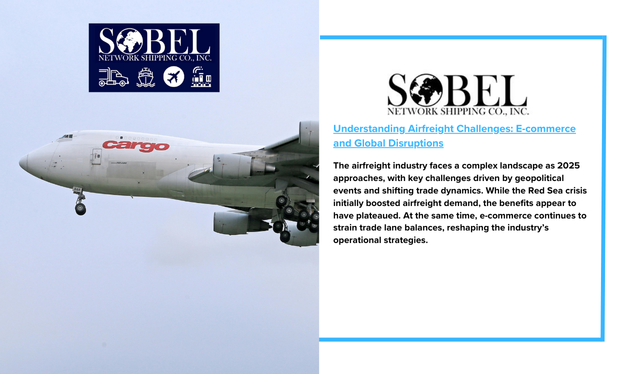The airfreight industry faces a complex landscape as 2025 approaches, with key challenges driven by geopolitical events and shifting trade dynamics. While the Red Sea crisis initially boosted airfreight demand, the benefits appear to have plateaued. At the same time, e-commerce continues to strain trade lane balances, reshaping the industry’s operational strategies.
Impact of Geopolitical Events
Disruptions in ocean freight linked to the Red Sea crisis have provided a temporary boost to airfreight rates and volumes. However, experts predict this surge has reached its peak, with potential declines if ocean shipping stabilizes or safe passage through the Red Sea is established. Despite this, looming risks, such as potential US East Coast port strikes, could create new demand spikes for airfreight in early 2025.
Meanwhile, the ongoing Russia-Ukraine conflict and tensions in the Middle East further complicate global logistics. These geopolitical challenges are disrupting key hubs, rerouting freight flows, and adding operational costs for airlines seeking to avoid impacted regions.
E-commerce: A Double-Edged Sword
E-commerce growth has been a driving force behind airfreight demand, particularly on trade lanes originating in Asia. However, this demand exacerbates trade imbalances, as much of the global freighter capacity shifts to regions like China, leaving other continents undersupplied.
While passenger airlines have attempted to supplement capacity, rerouted flights and reduced belly capacity on routes like China to Europe have left gaps in airfreight availability. Airlines have resorted to regional freighter networks to address these shortages, a trend expected to continue into 2025.
Industry Adjustments to Changing Dynamics
Experts note that without the influence of e-commerce and the Red Sea crisis, airfreight growth would appear minimal. However, these factors are masking declines in other verticals, such as automotive and pharmaceutical shipments, the latter increasingly moving from air to sea transport.
Additionally, ongoing capacity constraints are exacerbated by challenges like an ageing freighter fleet, delivery delays, and strikes in key logistics sectors. These disruptions are expected to persist, leading to a scenario where demand growth outpaces capacity expansion in 2025.
Preparing for the Future
Airfreight companies must adapt to this evolving environment by diversifying capacity, leveraging regional feeder networks, and addressing trade imbalances. The continued rise of e-commerce highlights the need for strategic investment in infrastructure and technology to accommodate growing demand while mitigating operational risks.
As the industry navigates these challenges, staying informed and agile will be critical to ensuring smooth supply chain operations in the face of persistent disruptions.


